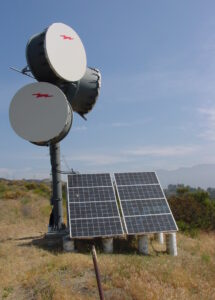Can microwave RF repeaters adapt? Adaptive Modulation Support
 Q? Do Peninsula Engineering’s microwave RF repeaters support adaptive modulation?
Q? Do Peninsula Engineering’s microwave RF repeaters support adaptive modulation?
A Yes, they do; Peninsula’s microwave RF repeaters thrive on adaptive modulation!
Adaptive Modulation, AMR, or ACM are employed on digital microwave radios carrying packet traffic such as Ethernet. During path fading, these radios can step down the modulation complexity and increase system gain while sacrificing transmission capacity. The benefits of adaptive modulation include allowing more complex, greater capacity modulations to be used during normal path conditions, reduced antenna sizes, reduced need for space and frequency diversity, all leading to lesser cost, higher performance systems.
When a Peninsula microwave RF repeater is used between radios with adaptive modulation, the setup is simple. The RF repeater’s output power is set to support the most complex modulation used on the link. As adaptive modulation steps down, the RF repeater will maintain the same output power as previously set. The radio threshold and RF repeater minimum signal level improve with reduced modulation complexity; thus, system gain improves at the RF repeater and at the radios and availability increases.
Path calculations are typically run for the reference modulation and all modulation steps. The RF repeater’s output power is held constant for all modulations.
Peninsula microwave RF repeaters do not change output power when the modulation steps down. RF repeaters do not detect the type of modulation that is in use. As a result, these repeaters do not include a means to automatically adjust the output power other than to simply keep the power constant.
